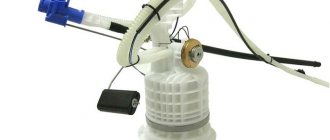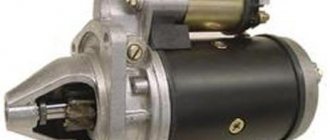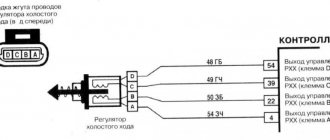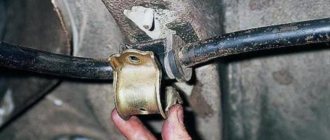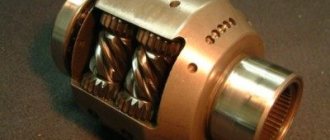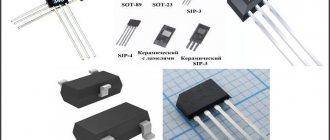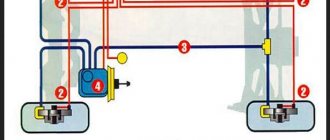Every automobile internal combustion engine needs high-quality cooling and lubrication. For this purpose, cars with 4-stroke engines have a lubrication system in which engine oil is poured. There are two types: dry or wet sump. A similar system is used if the unit is valve or 4-stroke (read about the differences between this modification and a two-stroke here ).
More details about the types of lubrication systems are described in another review . Over time, there is less engine oil in the system, which is why, at a level below the minimum, the power unit begins to experience oil starvation, and in some cases, the electronics shut down the internal combustion engine and prevent it from starting.
To check the lubricant level, the driver periodically uses a dipstick, on which the manufacturer indicates the minimum and maximum values. The oil should be at a level between these marks. However, many modern vehicles do not provide for such a check - there is no dipstick in the engine at all.
Instead of a conventional dipstick, the injector will be equipped with an electronic level gauge. In this case, the electronic control unit controls the operation of the engine and notifies the driver of any problems that arise, including the state of the unit’s lubrication system.
In such machines, the dashboard has a separate indicator that signals an inappropriate oil level. This indicator is triggered by the indicators of the oil sensor. Let's take a closer look at the device, operating principle and types of silent sensors.
What is a car oil level sensor
The word sensor itself indicates that it is an electrical sensor that allows you to determine how much oil is in the engine reservoir (sump). Depending on the design, the device will have an individual electrical circuit.
An engine equipped with an oil level sensor will have a corresponding hole in the lower part of the crankcase in which this device will be installed. In most cases it will be located between the filter and the pan. In addition to the engine, the gearbox can also receive a similar sensor. An electric generator or other mechanical device that uses a 4-stroke internal combustion engine can be equipped with a sensor with a similar operating principle.
Repair and complete replacement of the oil sensor with your own hands or at a car dealership
Replacing the sensor yourself is quite possible and will save on the work of a car service specialist.
In general, the oil sensor is located to the left of the engine in foreign cars or directly in the crankcase, like in domestic cars, although there are more complex designs.
To replace the sensor yourself, you should place the car in an inspection hole and turn off the ignition and engine ground. Then you need to remove the pan and find the sensor to disconnect all the wires from it. Using a socket wrench “10”, the device mount is unscrewed. After this, it can be removed and replaced with a new one by performing all the same steps in reverse order.
Device
The oil sensor may have a different design depending on the principle of operation and additional functions that it can perform. Most modern devices are electronic. Their connection also depends on the principle on which they will work.
The simplest sensor is connected from the on-board electrical network. When it is triggered, the contact of the light closes, which will indicate that it is necessary to replenish the level in the pan. As for electronic modifications, their operating principle boils down to activating the corresponding algorithms programmed in the microprocessor.
When the device is triggered, corresponding signals are generated in the electrical circuit. They go to the control unit. The ECU determines which signal needs to be output to the instrument panel. In some vehicles, an audible signal or graphic is activated along with the illuminated indicator.
The photo shows a simple sensor in cross-section:
A) minimum oil level; B) maximum oil level; 1) magnetic contact; 2) float with magnet; 3) body; 4) connector for wiring.
The device of the simplest sensor (float type) includes the following elements:
- Magnetic contact (reed switch) . This element reacts to the movement of the magnetic float. When the magnet is in the field of action of the contact, the electrical circuit is closed and the signal on the dashboard lights up.
- Float . This element is located on top of the body. When the sensor is in a liquid, under the influence of a dense medium, the float is displaced and is constantly located on top of the oil. The float contains a permanent magnet. Changing the level in the tank causes the float to move. When it drops to the minimum value, the reed switch contact closes.
- Frame . This is a long hollow tube, inside of which the reed switch itself and its electrical component (insulated thin metal rods with an opening contact) are located. A float with a magnet, made in the shape of a ring, moves outside the body.
- Connector for connecting an electrical circuit . In the simplest scheme, the sensor is powered from a battery, and a signal light is connected in series to it.
This design can be used not only in oil tanks. The gas tank or cooling system may receive a similar sensor. In most cases, the device is installed using a threaded connection (screwed into the tank itself: engine block, fuel tank, gearbox housing, etc.).
Replacement
Before repairs, a number of preparatory measures should be carried out. First, you will need a pit, overpass or lift. In other cases, you can jack up the right side of the car and secure it with a stand. Secondly, you will need a tool: a 10 mm wrench (head), an aerosol cleaner for bitumen or oil stains, a rag and gasket sealant. The step-by-step guide looks like this:
- We install the car on a pit or overpass.
- We lock the wheels with the handbrake.
- Disconnect the negative terminal from the battery.
- We climb under the car and find the sensor.
- Under the oil filter and in the sensor area, everything is usually covered in oil and dirt.
- Apply an aerosol cleaner and wait 10–15 minutes.
- We clear the repair area.
- Disconnect the wire plug from the DUM.
- Unscrew the fastening bolt (10 mm wrench).
- Carefully remove the sensor.
- Clean the seating surface.
- Apply sealant to the mating surface of the sensor.
- We put the DUM on the engine and tighten it with a bolt.
- Connect the wire plug.
Some advise removing the engine protection. But for replacement from a pit or overpass, it hardly interferes. And yet, silicone and anaerobic sealants dry at a rate of 0.3 mm per day (±2 hours). Therefore, to ensure a reliable connection, it is recommended not to drive the car until the next day. This circumstance should be foreseen on the eve of repairs and plans should be adjusted taking into account the lack of “wheels”.
How does the oil level sensor work?
The simplest principle of operation is the float type sensor. When the level of lubricant or other monitored fluid drops, the circuit closes (in some cases opens) and an alarm lights up.
The device should not be calibrated on a cold engine. At this point, the oil level will generally be at maximum or within acceptable limits. When the engine starts, some amount of lubricant will definitely leave.
In this modification, the reed switch contact closes at the maximum level, and opens at the minimum level
When the ignition is activated, the electrical circuit is closed and the corresponding signal is sent to the relay. Due to the fact that the float is always on top, uninterrupted level control occurs. As soon as the liquid is produced or leaked, the float gradually lowers and the magnet stops influencing the reed switch contacts (or vice versa, closes the contact). The circuit closes/opens. The relay reacts to the absence or supply of power and closes the signal light circuit.
